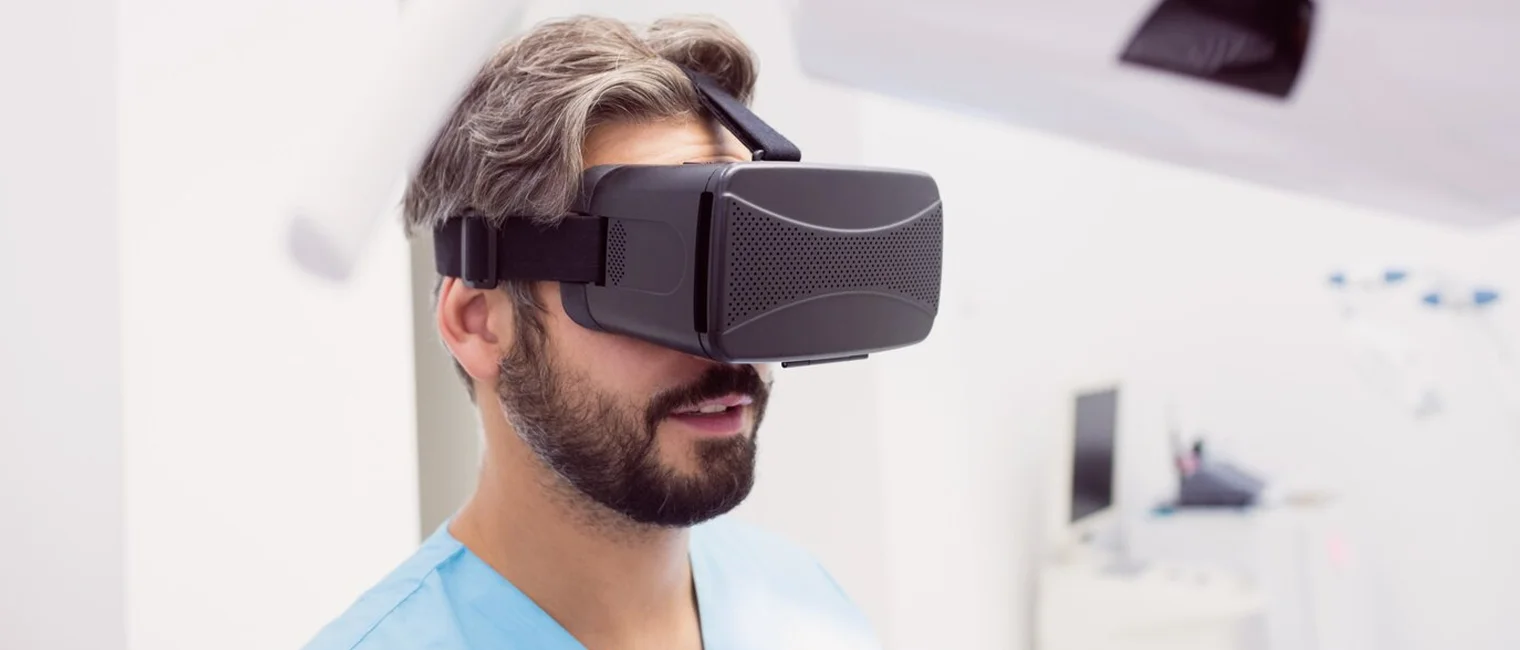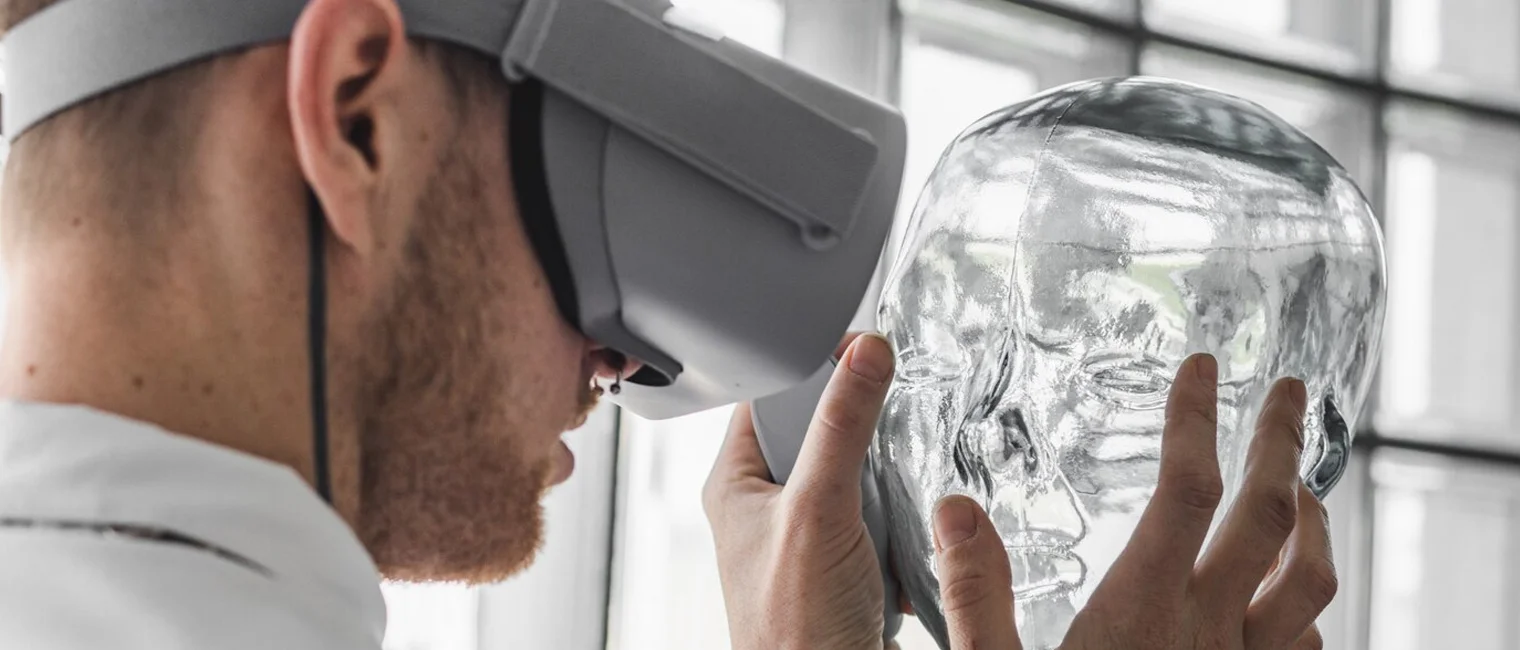Virtual Reality Medical Simulation is revolutionizing the way healthcare professionals are trained and prepared for real-world scenarios. Traditional methods, while valuable, often fall short in providing an immersive, hands-on experience. With virtual reality, medical trainees can engage in lifelike simulations, practicing procedures, diagnosing conditions, and managing critical scenarios in a safe and controlled environment. This approach not only enhances their technical skills but also builds their confidence in handling complex cases.
Virtual Reality Medical Simulation is more than just a tool for learning; it is an innovation that bridges the gap between theory and practice. By enabling healthcare professionals to interact with virtual patients, environments, and medical equipment, VR fosters a deeper understanding of medical procedures. At RoT STUDIO, we empower educators and medical practitioners with the tools to create customized simulation experiences. Without requiring coding expertise, our platform facilitates the development of tailored training modules, making advanced medical education accessible and efficient.
What is VR Simulation?
VR simulation is a technology-driven solution that replicates real-world environments or scenarios in a fully immersive, virtual reality setting. Using VR headsets and specialized software, users can engage with interactive simulations designed to mimic real-life tasks, environments, or experiences. VR simulation is widely used across industries such as healthcare, aviation, manufacturing, and education for training, design, and problem-solving.
Key Features of VR Simulation:
- Immersion: Provides a 360-degree view of a virtual environment, making the user feel present within the scenario.
- Interactivity: Allows users to perform actions, manipulate objects, and respond to challenges within the simulation.
- Realism: High-quality graphics and physics make the experience as close to reality as possible.
- Customizability: Scenarios can be tailored to meet specific industry or organizational needs.
- Safe Environment: Offers risk-free practice for activities like handling machinery, performing surgeries, or navigating dangerous conditions.
Applications of VR Simulation:
- Training: Used to teach complex skills, such as flying an aircraft, performing medical procedures, or operating industrial machinery.
- Design and Prototyping: Enables engineers and architects to visualize and test designs in a virtual space.
- Problem Solving: Simulates scenarios to identify solutions, assess risks, and enhance decision-making.
By integrating VR simulation, businesses and organizations can save time, reduce costs, and improve outcomes while providing a dynamic and engaging user experience.
What is a 3D Simulator?
A 3D simulator is a digital tool that creates three-dimensional virtual environments for training, design, or analysis. Unlike traditional 2D simulations, a 3D simulator adds depth and realism, allowing users to interact with objects and environments as if they were in the real world. It can be used independently or integrated with VR technology for a more immersive experience.
Features of a 3D Simulator:
- Realistic Modeling: Provides detailed 3D representations of objects, equipment, or entire environments.
- Interactive Components: Users can manipulate objects, navigate spaces, and simulate actions within the 3D environment.
- Physics Integration: Incorporates realistic physics to mimic real-world behaviors, such as gravity, motion, and collisions.
- Scalable Applications: Used across industries, from manufacturing and gaming to healthcare and construction.
Applications of 3D Simulators:
- Training and Education: For example, simulating vehicle driving, surgical procedures, or industrial equipment operations.
- Design and Engineering: Helps visualize and test prototypes in a virtual space before production.
- Gaming and Entertainment: Provides engaging, interactive 3D experiences in video games and virtual worlds.
- Risk Analysis: Simulates potential hazards in scenarios like natural disasters or industrial processes.
The combination of 3D simulation and VR technologies further enhances the user experience, creating highly realistic, interactive, and valuable tools for learning, problem-solving, and creativity.
How is VR Used in Medical?
Virtual reality (VR) is transforming the medical industry by offering innovative solutions that improve training, diagnosis, treatment, and patient care. At RoT STUDIO, we enable healthcare professionals to leverage VR technology without the need for technical expertise, making these advancements accessible to a wide range of users. This ensures that healthcare organizations can harness the full potential of VR to enhance their practices.
Applications of VR in Medicine:
- Medical Training and Simulations:
Virtual reality allows medical students and professionals to practice procedures in a risk-free environment. With lifelike simulations, they can perform surgeries, learn anatomy, and rehearse complex techniques without the need for live patients. - Patient Treatment and Therapy:
VR is used to treat various psychological and neurological disorders, such as phobias, PTSD, and chronic pain. Immersive environments provide patients with controlled exposure therapy or relaxation techniques tailored to their needs. - Surgical Planning and Precision:
Surgeons utilize VR to visualize complex procedures before entering the operating room. By examining 3D models of a patient’s anatomy, they can develop more accurate surgical plans and minimize risks. - Rehabilitation and Physical Therapy:
VR creates interactive exercises for patients undergoing physical therapy. These programs make the rehabilitation process engaging, improving patient motivation and outcomes.
RoT STUDIO’s Role in Medical VR:
RoT STUDIO’s drag-and-drop tools make it easy for healthcare professionals to design custom VR training modules and therapeutic programs. Whether creating scenarios for surgical practice or patient therapy, RoT STUDIO provides a user-friendly platform to build immersive experiences. Its adaptability supports a wide range of healthcare applications, from training hospital staff in safety protocols to offering innovative patient care solutions.
With VR, the medical industry is stepping into a new era of efficiency and innovation, and platforms like RoT STUDIO are at the forefront of this transformation. By empowering healthcare professionals to create tailored VR experiences, we bridge the gap between technology and medicine.

What is the Best VR Medical Simulation?
The best VR medical simulations are those that effectively replicate real-world medical scenarios, offering healthcare professionals a risk-free and immersive environment for learning and practice. These simulations are widely used for training medical students, enhancing surgical skills, and preparing for emergency scenarios. Leading VR medical simulation platforms prioritize realism, interactivity, and scalability, enabling precise skill development and improved patient outcomes.
Key Features of the Best VR Medical Simulations:
- Realistic Anatomical Models: High-fidelity 3D models of human anatomy for accurate practice.
- Interactive Scenarios: Hands-on activities such as surgeries, patient diagnostics, or emergency care procedures.
- Performance Tracking: Real-time feedback and analytics to evaluate the trainee’s skills and areas for improvement.
- Multi-User Capability: Enables collaborative training for teams of medical professionals.
- Customizable Content: Tailors training modules to specific medical specialties, such as cardiology, orthopedics, or obstetrics.
Examples of Notable VR Medical Simulations:
- Osso VR: Focused on surgical training, offering realistic simulations for practicing complex procedures.
- Body Interact: Provides patient diagnosis and treatment scenarios for medical students and professionals.
- SimX: Offers customizable VR medical training for a variety of healthcare disciplines.
These simulations not only enhance skill acquisition but also reduce errors, improve decision-making under pressure, and enable repetitive practice without risking patient safety.
What is the Difference Between Simulation and Virtual Reality?
The terms “simulation” and “virtual reality” are often used interchangeably, but they refer to distinct concepts with different applications and technologies. Below is an explanation of the key differences:
Simulation:
- Definition: A simulation is a digital or physical replication of real-world processes or environments for training, analysis, or experimentation purposes.
- Technology: Simulations can be 2D or 3D and do not necessarily require immersive tools like VR headsets.
- Application: Commonly used in fields like education, engineering, and aviation (e.g., flight simulators, surgical models).
- Interaction Level: Typically interactive but not fully immersive; the user may interact with the system using traditional devices like keyboards or touchscreens.
Virtual Reality (VR):
- Definition: VR is a fully immersive digital environment created using specialized hardware, such as VR headsets, allowing users to feel “present” in a virtual world.
- Technology: Utilizes headsets, motion controllers, and other devices to simulate a 360-degree virtual environment.
- Application: Widely used in gaming, training, healthcare, and design (e.g., VR surgical training, architectural walkthroughs).
- Interaction Level: Fully immersive, enabling the user to interact with the virtual environment as though they were physically present.
Key Differences:
| Aspect | Simulation | Virtual Reality |
| Immersion | Partial or non-immersive | Fully immersive |
| Tools Required | Can use basic computers/screens | Requires VR headsets and gear |
| Primary Use | Analysis, prediction, training | Immersive training, gaming, design |
| User Experience | Observational or interactive | Experiential and engaging |
Simulation focuses on replicating processes or scenarios, while VR adds the element of immersion, making the user feel physically present in a digital environment. Both technologies are valuable, with applications often overlapping, particularly in fields like training and education.

What is the Future of Virtual Reality in Healthcare?
The future of virtual reality (VR) in healthcare is poised to revolutionize the industry, offering transformative solutions across diagnostics, treatment, and training. With continuous advancements in VR technology, healthcare providers can deliver more effective, personalized, and accessible care. Below are some key areas where VR is expected to shape the future of healthcare:
- Advanced Medical Training and Education
- Simulated Learning Environments: VR will continue to provide immersive training for medical students and professionals, enabling them to practice complex procedures in risk-free virtual environments.
- Remote Education: Students and trainees worldwide can access high-quality education through virtual classrooms and shared VR scenarios.
- Enhanced Patient Care
- Therapeutic Applications: VR is being increasingly used for pain management, mental health therapy, and rehabilitation. Future developments could see more effective applications for conditions such as PTSD, anxiety, and chronic pain.
- Improved Accessibility: Virtual consultations using VR will allow patients in remote areas to access specialized care without the need for physical travel.
- Precision Surgery and Robotics
- Pre-Surgical Planning: Surgeons will utilize VR to create detailed simulations of a patient’s anatomy, allowing for precise surgical planning and improved outcomes.
- VR-Assisted Robotic Surgeries: The integration of VR with robotic systems will enable surgeons to perform minimally invasive procedures with enhanced accuracy and control.
- Virtual Health Monitoring
- Wearable Technology: As VR integrates with wearable health devices, real-time health monitoring in virtual environments will become a reality, aiding in early detection and prevention of diseases.
- Data-Driven Insights: VR platforms combined with artificial intelligence will analyze patient data to provide personalized treatment plans.
- Mental Health and Well-Being
- VR Therapy: The use of VR for exposure therapy, cognitive behavioral therapy, and mindfulness practices will become more widespread, making mental health treatment more engaging and effective.
- Stress and Anxiety Reduction: VR environments designed for relaxation and meditation will help reduce stress in both patients and healthcare workers.
- Healthcare Accessibility and Global Reach
- Telemedicine Expansion: VR will enhance telemedicine by creating immersive environments for doctor-patient interactions, bridging the gap between physical and virtual consultations.
- Global Training Collaboration: Healthcare professionals from different parts of the world will collaborate in shared VR spaces for collective problem-solving and knowledge exchange.
Challenges to Address:
While the future of VR in healthcare is promising, certain challenges need to be addressed, including:
- Cost and Accessibility: Making VR solutions affordable and widely available.
- Regulatory Compliance: Ensuring VR applications meet healthcare standards and regulations.
- Ethical Concerns: Protecting patient data and privacy in VR environments.
As VR technology continues to evolve, it will unlock unprecedented opportunities in healthcare, transforming how medical professionals learn, diagnose, and treat patients, while making healthcare more inclusive and effective for everyone.

